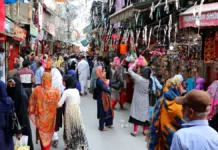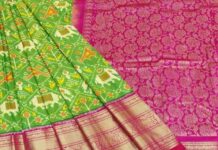 With the screening of the first Bhojpuri film “Ganga Mayya Tohe Piyari Chadahibo” in Patna, the history of this vernacular film industry has come full circle as it was shown in public exactly fifty years ago, in February 1963.
With the screening of the first Bhojpuri film “Ganga Mayya Tohe Piyari Chadahibo” in Patna, the history of this vernacular film industry has come full circle as it was shown in public exactly fifty years ago, in February 1963.
To mark the completion of fifty years of tumultuous journey of the Bhojpuri cinema and offer viewers a taste of cinema history, Bihar Sangeet Natak Academy and Cine Society, Patna jointly organized a screening of this rare classic on February 22, at the Premchand Rangashala in Bihar’s capital.
The event was said to be attended by close to a thousand viewers ranging across all age categories according to the organizers.
Filmmakers and scholars look back with nostalgia on the cinematic journey of a language that is now spoken from Bihar to Mauritius.
“The first Bhojpuri film itself was a result of untiring efforts of veteran cine actor Nasir Hussain who insisted on making the film in Bhojpuri language only, after having heard of the desire of the then President Rajendra Prasad to see a film in his mother tongue in early 1960,” R N Dash, president, Cine Society, Patna told PTI.
After Nasir Hussain found patronage in Vishwanath Shahabadi as the producer and a chance encounter with Kundan Kumar, who eventually helmed the directorial venture, a history was about to be written in the realm of a regional dialect’s full-fledged debut on the big screen.
“The film was eventually dedicated to President Rajen Babu at his post-retirement retreat at the Sadaquat Asharam in Patna on February 21, 1963 and released the next day for public at the Veena Cinema in Patna,” Raviraj Patel, Cine Society, Patna member, said.
Patel, also an independent researcher and documentary filmmaker, who is currently working on a book on the making of ‘Ganga Mayya….’ said the film was “later released in Varanasi on April 4 the same year at the Prakash Talkies (now closed) as per the newspaper clippings of the time”.
“The film was shot in Patna, Maner, Varanasi, and supplemented with studio shoots in Mumbai. It was much ahead of its time and through its moving script attacked social evils like caste system, dowry and other ills and yet gave a wonderful entertainment material too.
“It is a classic in all sense. And, therefore the government must preserve films like these from the golden era for posterity,” Dash said.
Octogenarian Anandi Mandal who was employed as a manager, in the 60s, with the company which distributed the film in Patna and Kolkata, still recalls the overwhelming crowd and resounding acceptance of the film by viewers from far and wide, urban and rural.
“On the opening day of the show on February 22 that year, we had about one thousand people inside the venue and many thousands who had gathered outside as we had also brought in the main star cast and crew and it took us half-and-hour to negotiate through the crowd,” Mandal told PTI.
“We had the female lead Kumkum, already a star in Hindi cinema by then, male lead Asim Kumar, Padma Khanna, who later became a big name in Bollywood, the producer, director, famous composer Chitragupta, among others,” he said.
“So, big was the reception that the cinema ran for 19 weeks at Veena Cinema in Patna. This success was followed later by amazing films like ‘Lagi Nahi Chute Ram’ and ‘Bidesiya’, all a classic today which set such high standards that today’s sub-standard Bhojpuri cinema cannot even begin to match,” he added.
National Award winning documentary filmmaker and art historian Vijaya Mulay, who had co-founded the Patna Film Society (now Cine Society, Patna) in the 1950s, congratulated the team for marking the historic occasion with the first film.
Kunal Dutt
PTI






